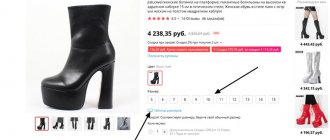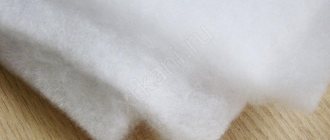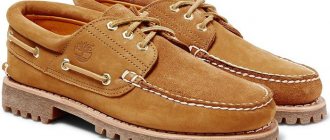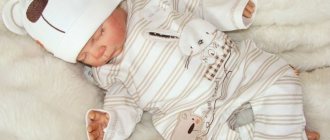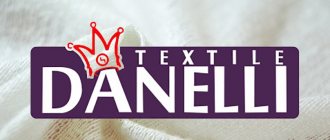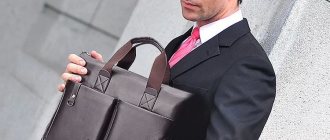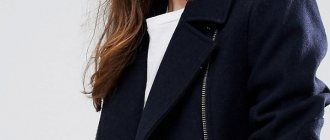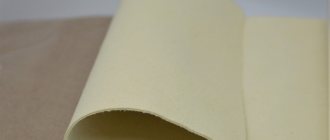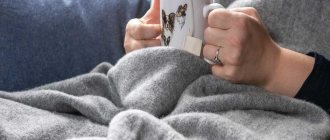Bike: what kind of fabric is it?
Fleece is a material formed from natural fibers. It is soft to the touch, with a pronounced pile on the front and back sides.
A baize, as it is known, is created using weaving - twill or plain. Since this material is made on a loom, it is called surya. At the initial stage, the fabric looks unaesthetic, so it is subjected to additional processing:
- cleansing and preliminary preparation;
- coloring;
- application of the selected pattern;
- finishing treatment.
The baize (seen in the photo) has fibers of different sizes on the inside and outside. Its appearance depends on the selected raw materials and production technology.
Compound
To understand what a bike is, you need to study its composition in detail. This type of fabric is formed from natural fibers - wool, cotton or a combination of both.
Unscrupulous manufacturers add synthetic threads to it when producing the material. But normally there should be no artificial fibers in this type of fabric.
To check for synthetics in a bike, you need to try to stretch it. If the fabric is elastic, it contains artificial threads.
A variety of linings in shoes for children
By creating conditions for their own children, every parent takes care of the comfort and convenience of the child, both psychological and physical. This also applies to buying shoes for children.
That's why professionals who develop children's shoes are trying to create such shoes
, which will meet all standards, will be reliable and comfortable for kids.
Similarly, in addition to visual appeal, shoes for children should also have other qualities, including warmth and a good lining. An important function of the lining in shoes for children is heat conservation, which can be in a material that can hold warm air and has good hygroscopicity. It is important that your feet remain dry at all times, as wet feet cool quickly.
At the same time, water should not penetrate the boot from the outside, but this is already a function of the upper material, to a greater extent. How does the lining retain heat? Let's first consider natural materials.
A very commonly used one is sheep fur.
In addition to heat, this material also provides a healing effect. Substances that are released from sheep's wool improve blood circulation even if it does not touch the feet directly, acts through thin socks, does not cause allergies, and has anti-inflammatory properties.
The sheepskin stores warmth between the tangled hairs.
The thicker the wool, the better the heat retention. Now, shoemakers are noticing a decline in the quality of fur, so honest manufacturers test materials at all stages of making shoes for children.
Plus, there is an alternative material
, also real - felt.
Felt fibers become entangled with each other during wear, which increases the heat retention of the foot. But still, real fur has always been considered the warmest material, which also relieves nervous tension and reduces the risk of stressful situations.
Fake fur is not easy to distinguish from real fur, and it has very similar characteristics, only it quickly loses the qualities that keep it warm, becomes thin, less breathable, due to which the feet quickly sweat, and wet feet also quickly freeze. But fake fur is lighter and more resistant to wear, is not picky about storage conditions, and has an affordable price. There is also average material
between faux and real fur: wool fur. This fur is 80% real, but due to artificial fiber it is most resistant to wear when compared with other materials.
Wool fur is more often used as a lining in shoes than other materials. Sometimes furs are combined by making a lining with inserts of real fur in the area of the foot, using fake fur in the boot. 1 more wear-resistant material
, used in the lining of demi-season shoes for children - lint or needle-punched yarn. The bike conducts air and water well, thanks to which the feet in such shoes remain dry and the foot breathes.
Vorsin consists of polyester fiber, which has good thermal conductivity properties, popular in the production of demi-season, sports and everyday shoes for children. Now membrane boots are becoming very popular, which are able to remove steam molecules and prevent water molecules from entering the boot. Heat exchange takes place well in the membrane fabric, which prevents the foot from sweating, however, the membrane fabric retains heat rather poorly and is therefore recommended for temperatures not lower than -10; therefore, for more severe winters, membrane fabric is used in combination with sheep fur.
An additional material in demand today is fleece, which has unsurpassed softness, lightness, and high hydrophobicity. Fleece made from polyester is not inferior in its own characteristics to natural materials: it dries very quickly, wicks moisture away from the skin surface well, and retains heat excellently.
If this material
did not accumulate electricity resulting from friction very much, it could be considered superior to real materials. The ability of fleece to retain heat is directly related to its thickness.
The thicker it is, the warmer it is.
In demi-season and summer shoes for children, materials such as leather, ecological leather, felt, textiles and various combinations of materials that have their own properties are used, which are good qualities or disadvantages over other materials. Combinations of materials come from considerations of economy, which should not affect the quality of shoes, which also carry some protection functions and heat conservation. For the convenience of consumers, this website botika.ru has filters through which it is possible to organize shoes
, if you have any tastes in the materials from which
shoes
for children are made. If your store specializes in shoes made only from natural materials or, on the contrary, economy class shoes, then you can make a confident choice much faster, thanks to the filters we have installed. Our online store botika.ru strives to be profitable and comfortable for our consumers.
We increase your income by saving time!
Properties
Characteristics of flannelette fabric:
- It has wear resistance and density. A flannel robe or other product made from this material will last a long time without deteriorating, even after frequent washing.
- Absorbs moisture well and dries quickly.
- Does not cause allergies because it consists of natural materials.
- Lets air through. Therefore, clothing made from flannelette is comfortable.
- The fabric is pleasant to the touch and to the body.
- Has good heat-insulating properties.
- It has a large selection of colors, it is possible to apply drawings.
The disadvantage of the material is its capriciousness in care, which is explained by its natural composition. Also, flannelette fabric is inelastic.
A variety of linings in shoes for children
By creating conditions for their own children, every parent takes care of the comfort and convenience of the child, both psychological and physical. This also applies to buying shoes for children.
Because professionals who develop children's shoes
, they are trying to create
shoes
that will meet all standards, be reliable and comfortable for kids. Similarly, in addition to visual appeal, shoes for children should also have other qualities, including warmth and a good lining. An important function of the lining in shoes for children is heat conservation, which can be in a material that can hold warm air and has good hygroscopicity. It is important that your feet remain dry at all times, as wet feet cool quickly.
At the same time, water should not penetrate the boot from the outside, but this is already a function of the upper material, to a greater extent. How does the lining retain heat? Let's first consider natural materials.
A very commonly used one is sheep fur.
In addition to heat, this material also provides a healing effect. Substances that are released from sheep's wool improve blood circulation even if it does not touch the feet directly, acts through thin socks, does not cause allergies, and has anti-inflammatory properties.
The sheepskin stores warmth between the tangled hairs.
The thicker the wool, the better the heat retention. Now, shoemakers are noticing a decline in the quality of fur, so honest manufacturers test materials at all stages of making shoes for children.
Plus, there is an alternative material
, also real - felt.
Felt fibers become entangled with each other during wear, which increases the heat retention of the foot. But still, real fur has always been considered the warmest material, which also relieves nervous tension and reduces the risk of stressful situations.
Fake fur is not easy to distinguish from real fur, and it has very similar characteristics, only it quickly loses the qualities that keep it warm, becomes thin, less breathable, due to which the feet quickly sweat, and wet feet also quickly freeze. But fake fur is lighter and more resistant to wear, is not picky about storage conditions, and has an affordable price. There is also average material
between faux and real fur: wool fur. This fur is 80% real, but due to artificial fiber it is most resistant to wear when compared with other materials.
Wool fur is more often used as a lining in shoes than other materials.
Sometimes furs are combined by making a lining with inserts of real fur in the area of the foot, using fake fur in the boot. 1 more wear-resistant material
, used in the lining of demi-season shoes for children - lint or needle-punched yarn. The bike conducts air and water well, thanks to which the feet in such shoes remain dry and the foot breathes.
Vorsin consists of polyester fiber, which has good thermal conductivity properties, popular in the production of demi-season, sports and everyday shoes for children. Now membrane boots are becoming very popular, which are able to remove steam molecules and prevent water molecules from entering the boot. Heat exchange takes place well in the membrane fabric, which prevents the foot from sweating, however, the membrane fabric retains heat rather poorly and is therefore recommended for temperatures not lower than -10; therefore, for more severe winters, membrane fabric is used in combination with sheep fur.
An additional material in demand today is fleece, which has unsurpassed softness, lightness, and high hydrophobicity. Fleece made from polyester is not inferior in its own characteristics to natural materials: it dries very quickly, wicks moisture away from the skin surface well, and retains heat excellently.
If this material did not accumulate electricity resulting from friction very strongly, it could be considered superior to real materials.
The ability of fleece to retain heat is directly related to its thickness. The thicker it is, the warmer it is.
In demi-season and summer shoes for children, materials such as leather, ecological leather, felt, textiles and various combinations of materials that have their own properties are used, which are good qualities or disadvantages over other materials. Combinations of materials come from considerations of economy, which should not affect the quality of shoes, which also carry some protection functions and heat conservation.
What is the difference between flannel, lint, fleece and flannel
According to the description, the bike is similar to other fabrics - flannel, nap and fleece. Despite this, the materials have many differences.
Flannel is significantly thinner than flannel. Through the combing, which is not necessarily double-sided, the weaving of threads is visible. Flannel is a natural cotton fabric. It perfectly absorbs moisture and is quite warm, pleasant to the touch, and allows air to pass through well.
The lint is called needle-punched yarn. It is mainly used for decorative lining of the inside of shoes. This material is resistant to moisture and has a long service life.
Fleece is made from polyethylene terephthalate fibers. Externally, the structure of the material is similar to six, but it is formed from synthetic threads. Also, fleece is not able to absorb moisture. This distinguishes it from a bike, which absorbs liquid well.
Properties of lint
This material has a lot of good properties. The key advantages of such non-woven pile fabric include:
- wear resistance;
- good thermal insulation properties;
- hypoallergenic;
- long operational period;
- resistance to moisture.
Reference! In addition to all the parameters listed above, this type of lining provides complete ventilation.
What is sewn from flannelette fabric?
Flannelette fabric is pleasant to the body, so it is widely used for making clothing (for children and adults).
Such things retain temperature well and create optimal air exchange, so they are suitable for newborns. Fleece is used for bed linen and blankets. This material is also used in the shoe industry.
Clothes: what is made from flannelette fabric
Women's and men's flannel shirts are very popular because they are very warm, which is ideal for winter. Many other clothes are made from this material: pajamas, dressing gowns, home dresses.
No less popular are coats, insulated jeans, jackets, and jackets. For children, you can choose kits for home or outings. Shirts with large tartan checks have become very popular among women.
Every expectant mother should stock up on flannelette diapers, as they are great for baby's delicate skin and do not cause allergies. They also produce vests, shirts, blouses, and rompers for newborns. Clothes can be plain or have a pattern.
What is a flannelette blanket
A cotton-based flannel blanket is a great option for cold winter evenings. This fabric is also used for the production of bedspreads, blankets, and bed linen.
The flannelette fabric is quite dense, but soft. It allows air to pass through well, so it is used to create sleeping accessories.
Bike material in shoes
Linings for winter and demi-season shoes are made from flannel. The material is found in boots, boots, and sneakers.
The flannel lining pairs well with the leather upper, creating optimal conditions for your feet in any season. Insoles are also made from the material.
Where is lint used?
This type of lining is used in men's, women's and children's demi-season footwear, including rubber boots . Products with a lint lining will keep your feet well insulated.
Important! Such boots are a very wonderful choice for the off-season, when the temperature varies from 0 to 10 degrees.
Manufacturers nowadays recommend many different materials for thermal insulation for finishing the inside of shoes. The main tasks that high-quality lining materials must solve are providing the greatest warmth, coziness and comfort to a person when wearing such products. Vorsin is highly popular among manufacturers and is one of the most practical and good options for demi-season models.
How to install an anti-cat mesh on a window yourself, a simple way to protect an animal
How to care for things from yarn
You need to care for bike products as follows:
- You can wash things in an automatic machine with a spin in a centrifuge. The optimal temperature is 40-45°C.
- Ironing fabric with a hot iron is permitted. The pile will remain fluffy if this is done after the canvas has completely dried.
- To make clothes softer, it is better to additionally use conditioner during washing.
- To remove heavy stains, it is recommended to spot treat the fabric with soapy water.
Information on caring for a specific product is indicated on the item's label.
